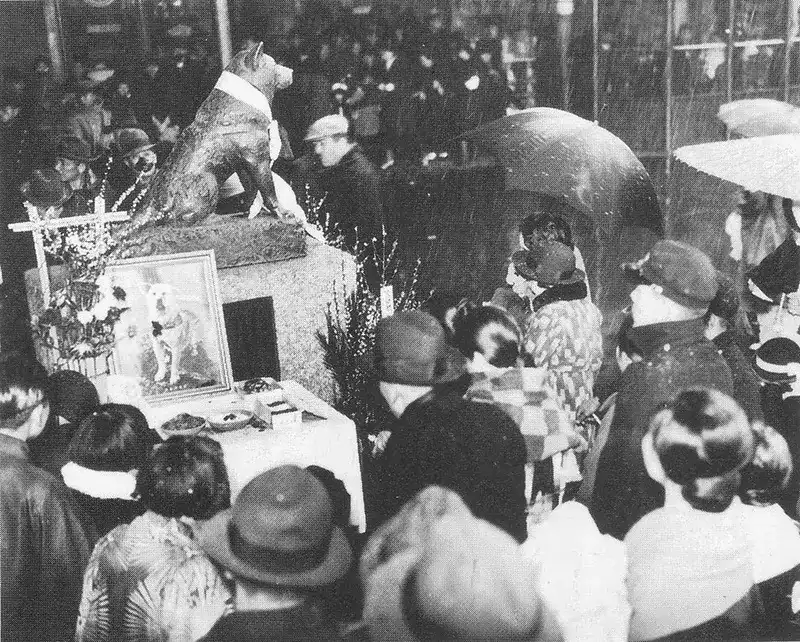Every day between 1925 and 1935, a dog named Hachiko turned Tokyo’s Shibuya Station into the setting of one of the most touching true stories of loyalty ever told. For nearly a decade, Hachiko waited faithfully for his deceased owner, never losing hope that he would return.
Hachiko was not just a pet; he was the beloved companion of a university professor who, before his untimely death, was greeted by the faithful dog every evening at the station.
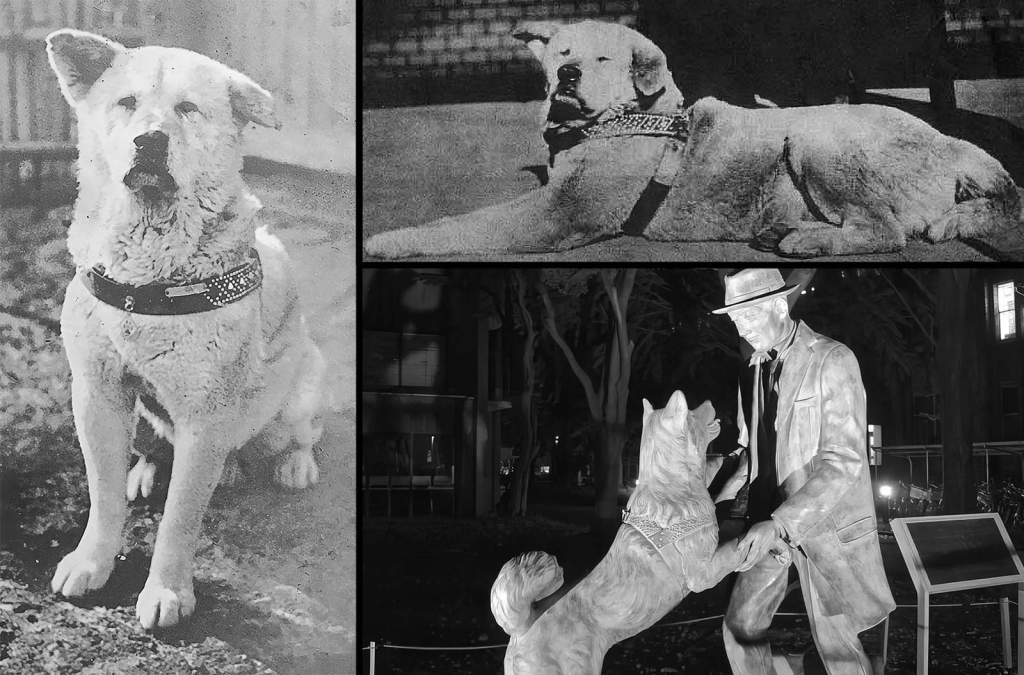
How Hachiko and His Owner, Hidesaburō Ueno, Met
Hachiko, a white Akita, was born on November 10, 1923, on a farm in Ōdate, Akita Prefecture, Japan. Around the same time, Professor Hidesaburō Ueno, a lecturer at the Department of Agriculture at Tokyo Imperial University (now the University of Tokyo), was searching for a purebred Japanese dog. One of his students from Akita helped him acquire the puppy from its breeder, Saitō.
The Akita-inu breed, known for its large size, gentle nature, and thick coat, had long been admired in Japan for its loyalty. Originally bred in the 1630s from hunting dogs and local breeds, Akitas were prized for their strength and bravery.
In January 1924, a 50-day-old Hachiko made a 20-hour train journey to Tokyo, packed carefully in a rice bag to keep him warm through the winter chill. Soon after, he arrived at Professor Ueno’s home near Shibuya Station.
Although the professor had no children, he treated the puppy with immense affection—letting him sleep beside his bed and even sharing meals. He named the dog Hachi, after the Japanese character “八” (hachi), meaning “eight,” because the dog’s legs formed that shape when he stood.
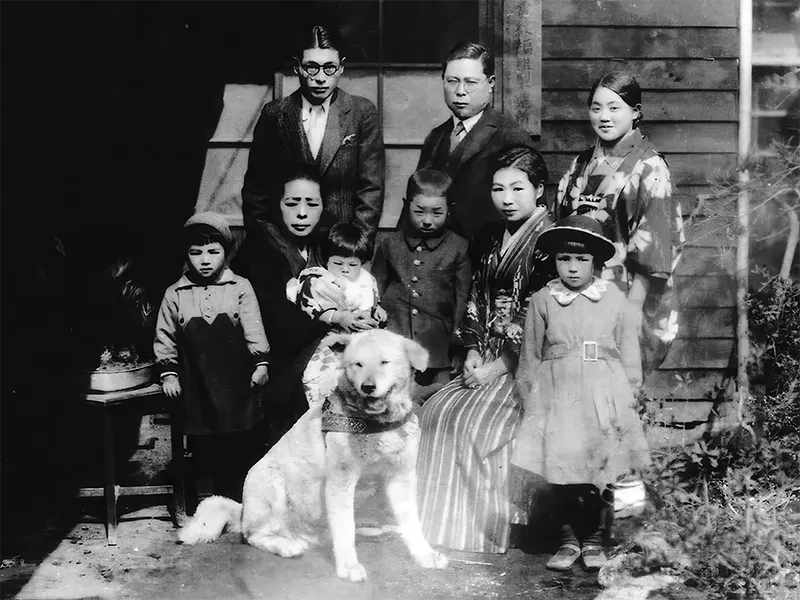
A Sudden and Heartbreaking Separation
Each day, Hachiko accompanied Professor Ueno to Shibuya Station in the morning, watching as he boarded the train to the university. At precisely 3 p.m., the loyal dog returned to the station to greet his owner and walk him home.
This routine continued faithfully until May 21, 1925, when tragedy struck. While lecturing at the university, Professor Ueno suffered a fatal cerebral hemorrhage. He never returned home, leaving Hachiko waiting in vain at the station.
The next day, Hachiko returned to the same spot, hoping to see his master step off the train. But Ueno never came. Despite being rehomed after the professor’s death, the loyal Akita continued to slip away each afternoon to wait at Shibuya Station, the place he had last seen his owner.
Through rain, snow, and heat, Hachiko came back every day for nine years, nine months, and fifteen days, faithfully waiting outside the ticket gates for the professor who would never return. His quiet devotion began to capture the attention and admiration of passersby.
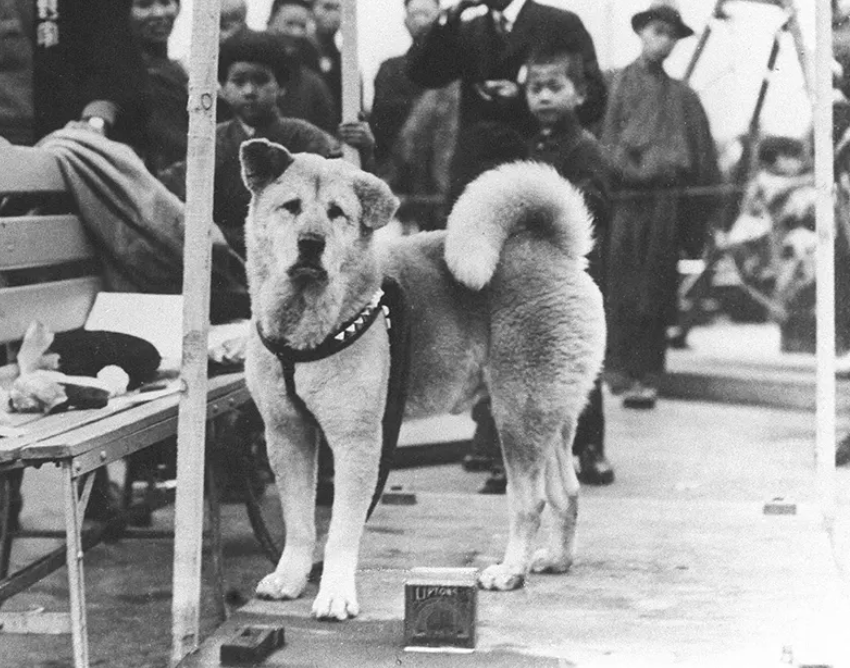
From Local Dog to National Hero
At first, some station workers were irritated by Hachiko’s presence, but his steadfast loyalty soon melted their hearts. They began bringing him food, offering water, and keeping him company as he waited.
Among those touched by his devotion was Hirokichi Saitō, one of Professor Ueno’s former students and an expert on the Akita breed. Curious, Saitō followed Hachiko one day and discovered that the dog was living with Ueno’s former gardener, Kozaburo Kobayashi.
Saitō later conducted a nationwide survey of Akitas and found that only 30 purebred Akitas remained in Japan, one of them being Hachiko. Deeply moved, Saitō wrote several articles about the loyal dog, including one that appeared in Asahi Shimbun in 1932, which made Hachiko a national symbol.
Across Japan, Hachiko’s story was held up as an example of devotion, love, and loyalty, values cherished in Japanese culture. Parents and teachers used his story to inspire children to show dedication to family and friends.
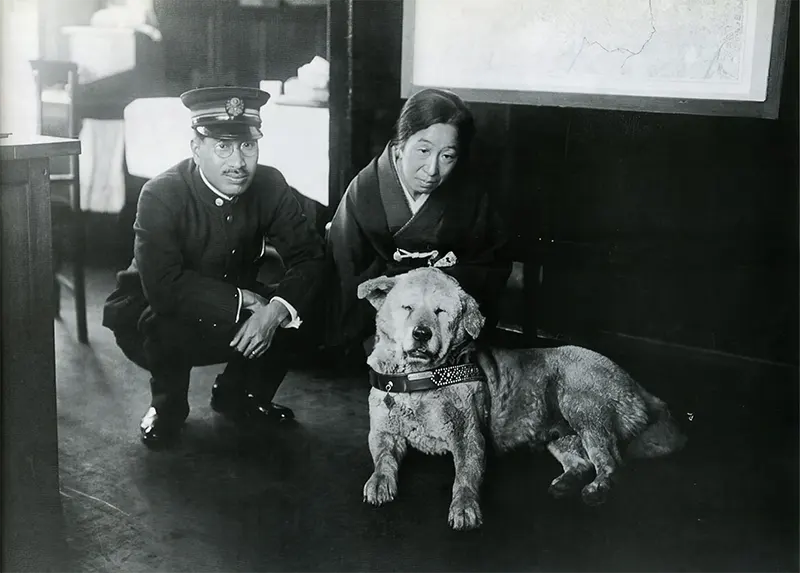
Hachiko’s Final Years and Cause of Death
Hachiko continued his daily visits to Shibuya Station until March 8, 1935, when he was found dead on the streets nearby at the age of 11.
In 2011, researchers confirmed that the cause of death was a combination of terminal cancer and a filaria infection (a parasitic disease). His passing brought nationwide mourning, as Japan grieved the loss of its most faithful dog.
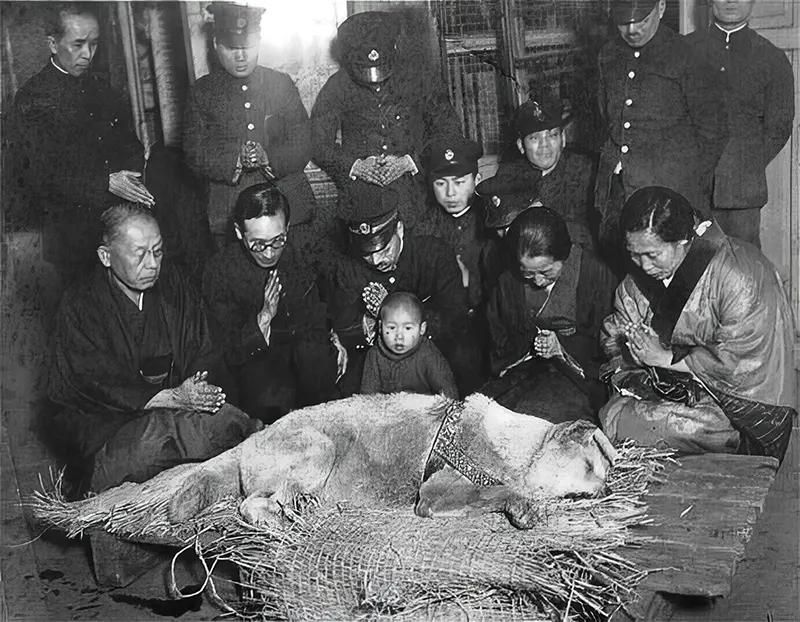
The Legacy of Hachiko
After his death, Hachiko’s body was cremated and his ashes were buried beside Professor Ueno at Aoyama Cemetery in Tokyo, finally reuniting the loyal dog with his beloved master.
Hachiko’s preserved pelt and taxidermy mount are now displayed at the National Science Museum of Japan in Ueno, serving as a lasting tribute to his loyalty.
In April 1934, a bronze statue of Hachiko, sculpted by Teru Ando, was unveiled at Shibuya Station. Although the original was melted down during World War II, a second statue, created by Teru’s son Takeshi Ando, was installed in August 1948. That statue still stands today, serving as a popular meeting point near the “Hachikō-guchi” (Hachiko Exit) of the station.
In 2015, the University of Tokyo’s Faculty of Agriculture unveiled another bronze statue, this one depicting Hachiko joyfully reunited with Professor Ueno, to mark the 80th anniversary of the dog’s death.
Every year on March 8, hundreds gather at Shibuya Station to honor Hachiko’s memory with a solemn ceremony. To this day, his story continues to remind people around the world of the power of love, loyalty, and the unbreakable bond between humans and their dogs.
